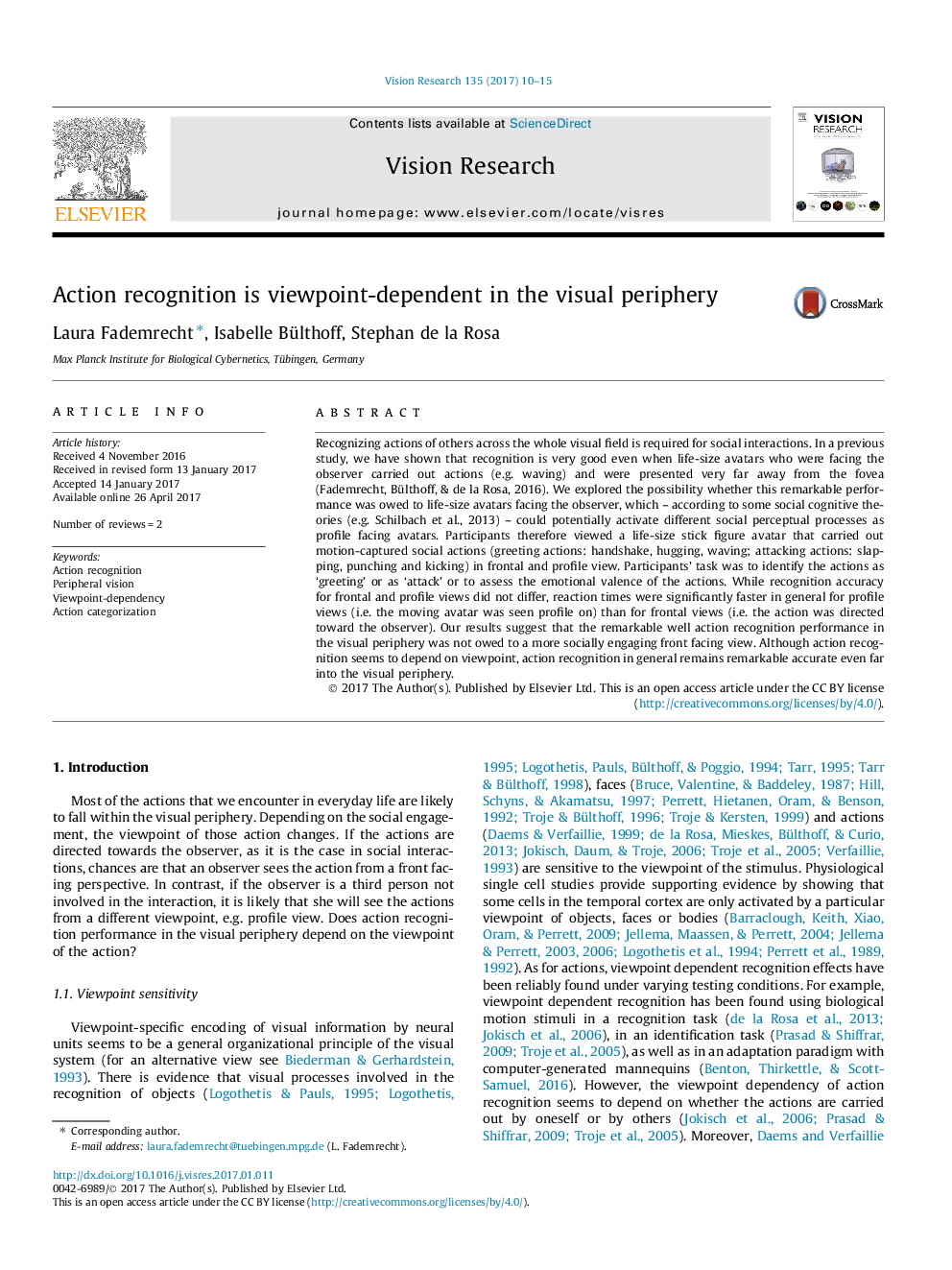| Article ID | Journal | Published Year | Pages | File Type |
|---|---|---|---|---|
| 5705905 | Vision Research | 2017 | 6 Pages |
Abstract
Recognizing actions of others across the whole visual field is required for social interactions. In a previous study, we have shown that recognition is very good even when life-size avatars who were facing the observer carried out actions (e.g. waving) and were presented very far away from the fovea (Fademrecht, Bülthoff, & de la Rosa, 2016). We explored the possibility whether this remarkable performance was owed to life-size avatars facing the observer, which - according to some social cognitive theories (e.g. Schilbach et al., 2013) - could potentially activate different social perceptual processes as profile facing avatars. Participants therefore viewed a life-size stick figure avatar that carried out motion-captured social actions (greeting actions: handshake, hugging, waving; attacking actions: slapping, punching and kicking) in frontal and profile view. Participants' task was to identify the actions as 'greeting' or as 'attack' or to assess the emotional valence of the actions. While recognition accuracy for frontal and profile views did not differ, reaction times were significantly faster in general for profile views (i.e. the moving avatar was seen profile on) than for frontal views (i.e. the action was directed toward the observer). Our results suggest that the remarkable well action recognition performance in the visual periphery was not owed to a more socially engaging front facing view. Although action recognition seems to depend on viewpoint, action recognition in general remains remarkable accurate even far into the visual periphery.
Keywords
Related Topics
Life Sciences
Neuroscience
Sensory Systems
Authors
Laura Fademrecht, Isabelle Bülthoff, Stephan de la Rosa,
